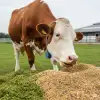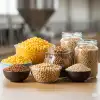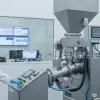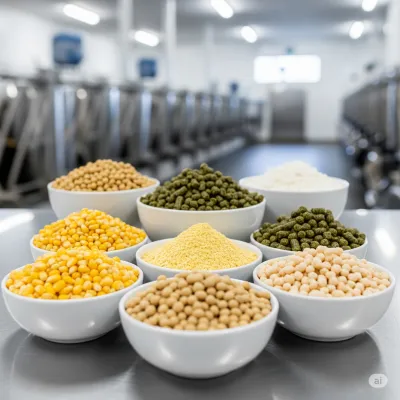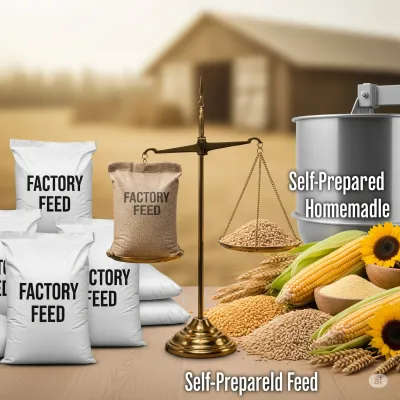Weight-Gaining Fattening Ration: Secrets to Rapid and Healthy Weight Gain
Learn how to prepare effective weight-gaining rations for rapid and healthy weight gain in beef animals. Energy, protein sources, and important considerations.
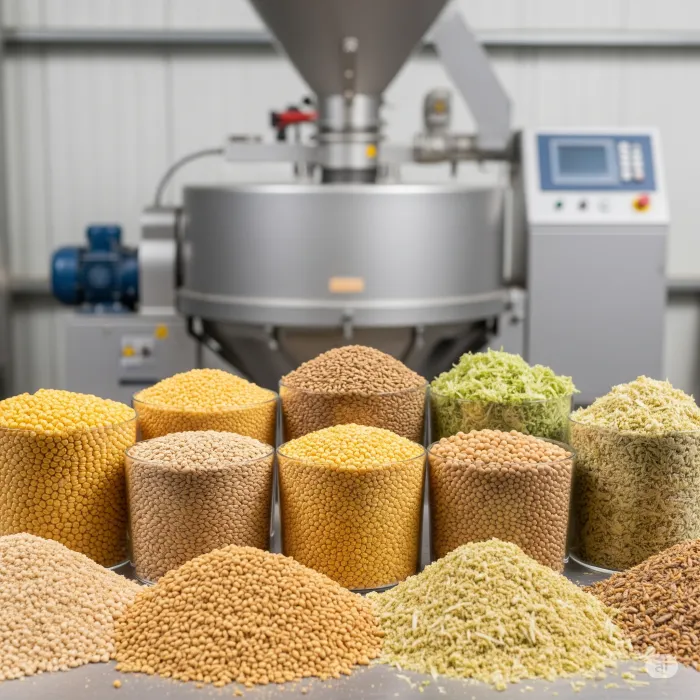
Weight-Gaining Fattening Ration: Secrets to Rapid and Healthy Weight Gain
One of the main goals in beef farming is to ensure animals achieve maximum **daily live weight gain** rapidly and healthily. The key to achieving this is preparing a proper **weight-gaining fattening ration**. Weight-gaining rations aim to maximize the energy and protein needs of animals, accelerating muscle and fat tissue development. In this article, we will discuss how to create an effective weight-gaining ration for your beef animals, which feeds are prominent, and the important tips to consider, in simple terms.
What is a Weight-Gaining Fattening Ration and Why is it Important?
A weight-gaining fattening ration is a feed mixture that contains high energy, sufficient protein, vitamins, and minerals in a balanced way, which are needed for rapid and quality meat production in animals during the fattening period. These rations aim not only to make animals gain weight but also to optimize meat quality (fattening degree, marbling).
The importance of a proper weight-gaining ration includes:
- Rapid Development: Ensures animals reach slaughter weight in a shorter time, which reduces the fattening period and costs.
- Feed Conversion: Thanks to high energy and protein content, it enables animals to convert feed into meat more efficiently.
- Meat Quality: Balanced nutrition positively affects quality characteristics such as meat flavor, color, and marbling score.
- Economic Gain: Animals that are ready for market in a shorter time and produce quality meat provide higher income for the farmer.
Prominent Feeds in a Weight-Gaining Fattening Ration
An effective weight-gaining ration usually combines high energy and protein sources. Here are the commonly used feed groups in these rations:
1. Energy Sources (Grains):
Energy feeds form the basis of weight-gaining rations. Grains provide the high energy necessary for animals to gain weight rapidly.
- Corn: One of the grains with the highest energy value and indispensable for fattening rations. It is usually used in crushed or ground form.
- Barley: A palatable and easily digestible energy source. Although it has slightly lower energy than corn, it holds an important place in a balanced ration.
- Wheat: While high in energy, it should be used carefully due to its high starch content. It usually constitutes a small part of the ration.
- Oats: Its energy value is lower than other grains, but it contributes to digestive health due to its fiber content. It can be preferred in the initial periods of fattening.
2. Protein Sources:
Sufficient and quality protein intake is vital for muscle tissue development. Protein sources can be one of the most expensive components of the ration, so choosing them correctly is important.
- Soybean Meal: The highest quality and most widely used plant-based protein feed. It provides rapid muscle development thanks to its high protein content.
- Sunflower Meal: Its protein value is slightly lower than soybean meal, but it also contributes to digestion due to its fiber content.
- Canola Meal: A balanced feed raw material rich in protein and energy.
- Corn Gluten Feed: A by-product rich in both protein and energy.
3. Forages:
Although concentrate feeds are prominent in weight-gaining rations, forages are essential for rumen health, rumination, and digestive regularity. Forage quality and quantity directly affect the efficiency of the ration.
- Corn Silage: The most preferred forage in fattening rations due to its high energy content and palatability.
- Quality Dry Hay: Alfalfa or good quality meadow hay provides fiber and some protein, supporting digestive health.
- Straw: Generally used to meet the fiber needs of the ration, but its nutritional value is low and it should not be given in high proportions.
4. Additives (Vitamins, Minerals, and Others):
Sufficient intake of vitamins and minerals is essential for growth, bone development, immune system, and overall health. In addition, some additives that improve feed utilization can also be used.
- Fattening Premixes: Special mixtures formulated to contain all necessary vitamins and minerals suitable for the animal's age and fattening period.
- Buffers (Sodium Bicarbonate): In high-grain rations, they help prevent ruminal acidosis (low pH), supporting feed intake and digestion.
- Yeast Cultures (Probiotics): Improve feed digestion and nutrient absorption by increasing the activity of beneficial microorganisms in the rumen.
- Bypass Fats: High-energy sources absorbed in the small intestine without being broken down in the rumen. They can be used to meet energy needs, especially in the late fattening period.
Important Considerations When Preparing a Weight-Gaining Fattening Ration
- Animal's Age and Weight: The ration should be adjusted according to the animal's age and current weight. Young animals have higher protein needs, while energy needs increase in the late fattening period.
- Gradual Transition: Animals should not be suddenly switched to a new ration or feeds with high energy/protein. Transitions should be made slowly over 7-10 days to prevent digestive problems.
- Feed Quality: Ensure that all feeds used are fresh, mold-free, and of high quality. Moldy or spoiled feeds negatively affect animal health and hinder weight gain.
- Water Supply: Animals should always have free access to clean and fresh water. Water is vital for feed intake and digestion.
- Feeding Frequency: High-yielding fattening rations should generally be given in 2 or 3 meals a day. This increases feed intake and keeps rumen pH more stable.
- Animal Comfort: Housing conditions (cleanliness, ventilation, sufficient space) should ensure animals are stress-free and comfortable. Stress reduces feed intake and weight gain.
- Regular Observation: Animals' feed intake, manure consistency, general health status, and behavior should be regularly observed. Early intervention in potential problems prevents yield loss.
- Expert Support: Preparing a fattening ration can be a complex process. Getting professional support from a veterinarian or animal nutrition specialist will help you create the most accurate and efficient ration.
Conclusion
A weight-gaining fattening ration is the cornerstone of profitable and successful beef farming. By using high energy and protein sources in a balanced way, supporting with quality forages, and providing necessary vitamin/mineral supplements, you can ensure your animals gain weight rapidly and healthily. Remember, proper nutrition means not only weight gain but also animal welfare and meat quality!
